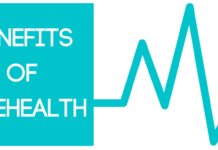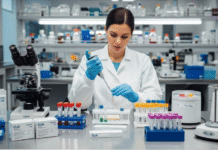Menopause is a natural biological process that marks the end of a woman’s reproductive years. It is defined as the cessation of menstruation for 12 consecutive months, typically occurring between the ages of 45 and 55 (NIH, 2021). While menopause is a normal phase of life, it can bring about a range of physical and emotional symptoms that significantly impact a woman’s quality of life. Effective management of these symptoms, including the use of hormone therapy (HT), is crucial for maintaining health and well-being during this transition. This article explores the various aspects of menopause management, with a particular focus on hormone therapy, its benefits, risks, and alternatives.
Understanding Menopause and Its Symptoms
Menopause occurs when the ovaries gradually reduce their production of estrogen and progesterone, the hormones responsible for regulating the menstrual cycle. This hormonal decline leads to the end of fertility and the onset of various symptoms, which can vary in severity and duration. Common symptoms include:
- Vasomotor symptoms: Hot flashes and night sweats are the most frequently reported symptoms, affecting up to 75% of menopausal women (Mayo Clinic, 2023).
- Vaginal and urinary changes: Decreased estrogen levels can cause vaginal dryness, itching, and discomfort during intercourse, as well as an increased risk of urinary tract infections.
- Mood changes: Many women experience mood swings, irritability, anxiety, and depression during menopause.
- Sleep disturbances: Insomnia and disrupted sleep patterns are common, often exacerbated by night sweats.
- Bone health: The decline in estrogen levels accelerates bone loss, increasing the risk of osteoporosis and fractures.
- Cognitive changes: Some women report memory lapses and difficulty concentrating during menopause.
Hormone Therapy: An Overview
Hormone therapy, also known as hormone replacement therapy (HRT), involves the administration of estrogen, either alone or in combination with progesterone, to alleviate menopausal symptoms. HT is available in various forms, including oral tablets, transdermal patches, gels, creams, and vaginal rings. The choice of therapy depends on the individual’s symptoms, medical history, and preferences.
Types of Hormone Therapy
1. Estrogen Therapy (ET): This involves the use of estrogen alone and is typically prescribed for women who have undergone a hysterectomy (removal of the uterus). ET is effective in relieving hot flashes, night sweats, and vaginal dryness (North American Menopause Society [NAMS], 2022).
2. Combined Estrogen-Progestogen Therapy (EPT): For women with an intact uterus, progesterone is added to estrogen therapy to protect against the risk of endometrial cancer, which can occur with estrogen-only therapy. EPT is also effective in managing menopausal symptoms (NAMS, 2022).
3. Low-Dose Vaginal Estrogen: This form of therapy is used specifically for treating vaginal and urinary symptoms. It is available in creams, tablets, and rings and has minimal systemic absorption, making it a safer option for women who cannot use systemic HT (Mayo Clinic, 2023).
Benefits of Hormone Therapy
HT is the most effective treatment for relieving moderate to severe menopausal symptoms, particularly hot flashes and vaginal atrophy. Studies have shown that HT can improve quality of life, reduce the risk of osteoporosis, and potentially lower the risk of colorectal cancer (NIH, 2021). Additionally, HT has been associated with a reduction in the risk of diabetes and may have a protective effect on cardiovascular health when initiated early in menopause (NAMS, 2022).
For women experiencing severe symptoms that disrupt their daily lives, HT can provide significant relief and improve overall well-being. It is particularly beneficial for those who experience early menopause or surgical menopause (due to ovary removal), as these women are at higher risk for long-term health issues related to estrogen deficiency.
Risks and Considerations
While HT offers significant benefits, it is not without risks. The Women’s Health Initiative (WHI) study, a landmark clinical trial, raised concerns about the potential risks of HT, including an increased risk of breast cancer, stroke, and blood clots (WHI, 2002). However, subsequent analyses have shown that the risks vary depending on the type of therapy, dosage, duration of use, and the age at which HT is initiated.
- Breast Cancer: The risk of breast cancer is higher with combined EPT, particularly with long-term use. However, the risk is lower with estrogen-only therapy (NAMS, 2022).
- Cardiovascular Disease: HT may increase the risk of stroke and blood clots, especially in older women or those with pre-existing cardiovascular conditions. However, when initiated in women under 60 or within 10 years of menopause, HT may have a neutral or even beneficial effect on heart health (NIH, 2021).
- Endometrial Cancer: Estrogen-only therapy increases the risk of endometrial cancer in women with an intact uterus. This risk is mitigated by adding progesterone (Mayo Clinic, 2023).
Alternatives to Hormone Therapy
For women who cannot or choose not to use HT, several non-hormonal options are available to manage menopausal symptoms:
1. Lifestyle Modifications: Regular exercise, a balanced diet, stress management, and adequate sleep can help alleviate some menopausal symptoms. Weight-bearing exercises, in particular, can improve bone health and reduce the risk of osteoporosis (NIH, 2021).
2. Non-Hormonal Medications: Selective serotonin reuptake inhibitors (SSRIs) and serotonin-norepinephrine reuptake inhibitors (SNRIs) have been shown to reduce hot flashes in some women. Gabapentin and clonidine are other non-hormonal options for managing vasomotor symptoms (Mayo Clinic, 2023).
3. Complementary and Alternative Therapies: Some women find relief through acupuncture, yoga, and herbal supplements such as black cohosh and soy isoflavones. However, the efficacy and safety of these therapies are not well-established, and they should be used with caution (NAMS, 2022).
4. Vaginal Moisturizers and Lubricants: Over-the-counter products can help alleviate vaginal dryness and discomfort during intercourse. These are particularly useful for women who prefer not to use vaginal estrogen (Mayo Clinic, 2023).
Conclusion
Menopause is a significant life transition that can bring about a range of physical and emotional challenges. Hormone therapy remains the most effective treatment for managing moderate to severe menopausal symptoms, but it is not without risks. Women considering HT should work closely with their healthcare providers to weigh the benefits and risks based on their individual circumstances. For those who cannot or choose not to use HT, a variety of non-hormonal options are available to help manage symptoms and maintain quality of life during menopause.
References
1. National Institutes of Health (NIH). (2021). Menopause: Overview. https://www.nichd.nih.gov
2. Mayo Clinic. (2023). Menopause: Symptoms and Causes. https://www.mayoclinic.org
3. North American Menopause Society (NAMS). (2022). Hormone Therapy Position Statement. https://www.menopause.org
4. Women’s Health Initiative (WHI). (2002). Risks and Benefits of Estrogen Plus Progestin in Healthy Postmenopausal Women. JAMA, 288(3), 321-333.
5. Harvard Health Publishing. (2021). Hormone Therapy: Is It Right for You? https://www.health.harvard.edu











